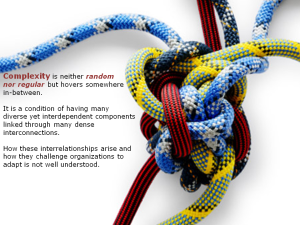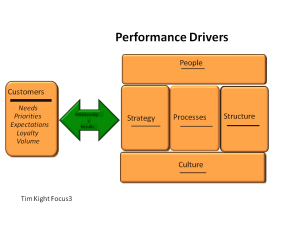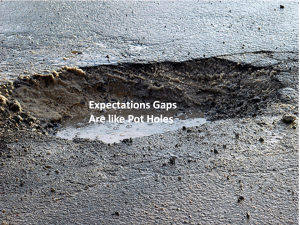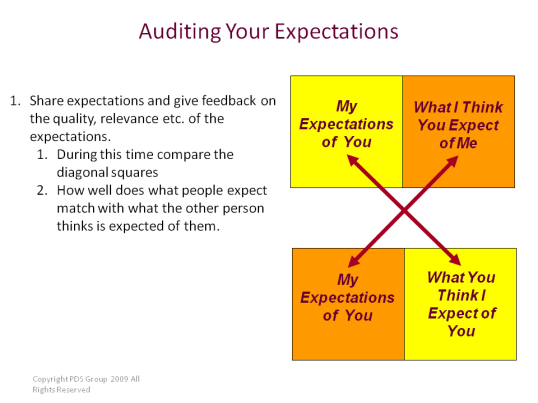(Nick Anderson, The Crispian Advantage & Dr Larry Dugan, Precision Personality Plus on WGVU )
This is part of the series: Seven Challenges of Leadership which focuses on ensuring competitive success by:
• Getting the Right People
• With the Right Focus
• To produce the Right Responses
We are at the 6th stage. In our prior conversations we have covered the topics of:
• The Intelligent Use of Consultants
• The Leaders Responsibility to Embed Purpose
• Remove Distractions
• Align Expectations
• Differentiate from the Pack
• Coaching Strategically
All too often the failure to reward change is the pivotal point where change efforts fail—which is what makes it so regrettable. A company has gone through the necessary steps and just at the point where they are implementing the change, they misfire. Rewarding change lags behind the other processes. Thus a company can embed purpose, remove distractions, align expectations and coach. But if the recognition and reward systems of your company are based on lagging indicators such as sales revenue and profit margin, you will only encourage people to do things differently, not “do different things!”
To change, you need to consistently reward the new behaviors, not the “reward legacies” of the past.
What attributes do effective leaders need to meet this important challenge of Rewarding Change?
• High on Open-Minded
• Low on Security Minded
• High on Innovating
What evidence do you have to demonstrate what happens when leaders and managers do not reinforce change?
Probably the best illustration of this occurred when we analyzed IMS’s communication channels.
Peter, was the Director of the Toronto sales force. Mary Jo lead the Division of Customer Data Solutions. Peter wanted simple, quick sales of equipment.
Mary Jo—and the company leadership—were shifting to a process of leasing equipment and providing service. The sales force continued to be paid a higher commission for selling equipment than selling Service Contracts. They had no incentive to do different things. Another example is what transpired with the Sweet’s Catalogs in the construction industry. A Sales force accustomed to selling large bound texts for thousands of dollars and the resultant commission, were now being asked to sell a CD-ROM version for significantly less (and less commission). This added to the dilemma of overcoming Industry resistance to making the shift.
So if you are going to ask people to sustain change, How can you measure and reward those who support your purpose?
This is the core of the issue. If a company is to overcome resistance to change, they need to reward new behaviors.
You start by keeping the right data. For example, if I am striving to emphasize positive labor—management interactions I have employees and managers track the time spent in productive business-based interactions and general positive social interactions. Then I reward—both by public recognition of their efforts and by financial compensation—those who show the most significant change.
Or if my goal is to continually find productive employees, I reward managers who demonstrate that they are taking steps in that direction.
What recommendations would you have on Benefits and Compensation?
Compensate new behaviors to a higher degree than old behaviors. As far as benefits go, work with the employee to ascertain what benefits are important to them. Example: A bank that was growing and needed a cadre of experienced employees for their new branches. Several very qualified applicants had been rejected based on the fact that they were seeking special conditions such as leaving at 3:30 (so they could be home for children returning from school) and ad hoc days off—to attend to sick children. Instead of hiring 3 full-time people, the bank hired 5 part-time staff, pro-rated the benefits packages and achieved their goal. If they had not been open to “doing different things” and compensating the employees and managers who resolved this issue, no one would have taken their claim seriously that they were “creating new policies” this could not have happened.
Another example: We were engaged with a company called MenuFocus. The “benefit” they are offering employees is the chance to design their future with the company. Now, the company helps in this process by completing comprehensive surveys on every individual in the organization so they can better learn their interests, aptitudes and personality traits as suited to a given position. That is a fringe benefit.
What proportion of people’s compensation should be tied to adopting the new behaviors?
Overall, at least 25%. At least 50% of increases in salary and benefits need to be tied to adopting the new behaviors. People need to know you are serious.
What else is important in Rewarding change?
Again, we start with Purpose. Successful companies place less emphasis on clear strategy and more on building a rich, engaging purpose. It is not enough just to build that purpose; you need to communicate purpose to employees at every level. Make it succinct. For example, tell employees… strategies change, purpose does not. We still have the same purpose; we are creating new ways to achieve that purpose. To use the example cited above, our strategy now is to lease equipment and obtain service contracts rather than sell equipment which will be antiquated in nine months.
Create new and more effective management processes.
• 45% of all profit margin fluctuations are a direct result of employee attitude
• 55% of employees feel underutilized and under-appreciated
• Boredom as a single factor reduces productivity by 50%—whether in a Service setting or a Production setting
Put these statistics together and you can begin to understand how companies fail. Successful companies move away from trying to control employees’ behavior and placing more emphasis in developing their capabilities and broadening their perspectives. Successful corporations are moving away from the old doctrine of strategy, structure and systems to a more organic model of purpose, process and people. This has meant creating an organization with which people can identify, in which they share a sense of pride, and to which they are willing to commit-committed members of a purposeful organization.
A great example of many of the concepts we have cited here can be found at Monarch Hydraulics. Monarch years ago instituted a Gain Sharing program whereby employees at every level shared in whatever gains made over actual costs.
So how do you achieve strong, enduring attachment from everyone to a new direction?
Achieving strong enduring commitment from everyone to new strategies requires a straight-forward approach including:
Articulating the well-defined corporate ambition
in such a way that captures employees’ attention and interest rather than stating purpose in terms related to strategic or financial goals.
Example:
FedEx. Overnight Anywhere Guaranteed.
This is Purpose. This can capture the imagination of everyone in the company every single day. Not ROI…not a strategy to penetrate the market more deeply. Purpose. Overnight Anywhere Guaranteed. There is no way you can misconstrue the meaning of those three words.
Another example, we are consulting with a Printing and Promotional Product Firm called Dodson Inc. Their new motto: 24-5…meaning:
• a 24-hour response on all estimates.
• 5 days to deliver product.
It is the focal point of every activity in the company. This is Purpose.
A sidebar. With this company we have another interesting phenomenon. As they recruit salespeople, this company openly tells applicants, we want you to make more money than we do as owners. How many companies do you know that do that? Again, to that end, to insure the change they have striven for, Dodson created a liberal compensations package
• Engaging everyone in the company is in developing, refining, and renewing the ambition.
• Ensuring that the ambition, the Purpose is translated into measurable activities to provide a Continuous benchmark for achievement.
• Making it everyone’s responsibility to sustain a Sense of momentum—and a sense of excellence—every single day.
How does a company instill new organizational values?
By the ways it defines, measures and rewards performance”
To date many still follow traditional practice of focusing almost entirely on financial results. The old mantra has had its day. This is not to say- “remove all financial targets!” It is more a question of balance:
“It’s fine to emphasize what we must shoot for, but we also need to know what we stand for…”
This is more difficult than articulating a new strategy because it relies less on analysis and logic and more on emotion and intuition. For too long, I think, we have operated on a set of beliefs and philosophies which have remained implicit. Some would say we repressed discussion of these issues so that we didn’t take our eye off-the-ball or not to offend people who held difference views. We have tended to taken refuge in “safe” financial performance targets that can’t be easily disputed.How many such differences do we know exist in the rest of Organizations?
How could unresolved differences blow us off course?
There are three lessons for instilling new organizational values:
1. Build the new philosophy around the company’s existing value and belief system.
2. Maintain a high level of personal involvement (leaders) in this activity over many years.
“In the end managers are loyal not to a particular boss or even to a company, but to a set of values they believe in and find satisfying”-Goran Lindahl, ABB
3. Third, translate broad philosophical objectives into visible and measurable goals.
“Most businesses focus all the time on profits, profits. I think this is deeply boring. I want to create an electricity and passion that bonds people to the company; you have to find ways to grab their imagination. You want them to feel they are doing something important.”- Anita Roddick, Bodyshop
What has been your experience of building core values?
We can’t use the same methods for, say, driving down profit objectives and establishing new value sets…organizational cynicism brushes off such initiatives as “flavor of the month.”
We can’t instill new values through a crash program, so:
- How can we build on the strengths and modify the limitations of our existing values without radical change?
- Where we do have to confront values, how are we going to do that?
- What sort of things would you advise in terms of rewards for people who try or actually do change?
Here are some thoughts…
Sowing the Message
Embedding values is obviously more than fine words. What lessons can we draw from research?
“talk, listen, and feel the atmosphere. Reiterate the new values at ever opportunity and tell stories that reflect their impact…” Jamie Houghton, Corning
Needless to say he supported such communication with concrete action to signal his seriousness of the change.
Measuring Progress
Many have found real problems in placing measures of progress on such things as value statements which don’t easily offer clearly defined goals. Unavoidably,
“the hard drives out the soft, and commitment to the desired values dissipates”
How can we avoid this? For Example-
Houghton’s approach was to publicize the new values (“world class company”) to the wider community repeatedly which contributed, overtime, to Corning being polled as “one of America’s most admired corporations.’ The result being that it could be measured by the extent to which employees identified with the standard- “world-class company”-and took pride in this achievement.
How do you do this in a rapidly changing world?
By giving meaning to people’s work-It goes to the heart of what will make or break the new structure.
Today’s world of work is rapidly changing. People’s loyalty continues to drift away from the Company and more toward activities they find intrinsically satisfying and congruent with their beliefs. This is especially true of consultancies, and ad agencies and other service organizations, etc. The more leaders have to rely on consultants and other specialists:
You cannot afford to have dissatisfaction due to a lack of such satisfaction or congruence.
The most successful companies’ studies, in this area, developed a new kind of relationship with their people.
• They translate big ideas down to a personal level
• They recognize people’s contribution and treate them like valuable assets.
• They ensure everyone understood how their roles fitted into the company’s overall purpose and how they could contribute personally to achieving it.
• They are committed to maximizing opportunities for personal growth and development.
How can we Recognize Individual Accomplishments?
Whilst international communications do help, the real core of recognition is not appreciated by many.
“Personal recognition must reflect genuine respect. People on the front lines are quick to recognize empty public relations gestures…”
In sum, any changes we make must improve the connection between the growth and development of organization with the growth and development of individuals.
Commit to developing employees
A clear message. Successful companies make a stronger commitment to personal development. Instead of simply training for job skills they develop their capacity for personal growth.
Anita Roddick said: “You can train dogs-We want to educate people and help them realize their full potential”
A large Consulting Group views the development of its people as a goal in itself and makes no proprietary claims to the skills and knowledge it develops. It’s recruiting brochure promises ‘after training with us, you could work for anyone…”
What else do leaders have to consider in releasing their people’s potential?
Fostering Individual Initiative
We have to develop a new momentum that improves recognition for individual initiative as the main source of growth. We have to find ways of institutionalizing this central belief in policies and procedures. For example:
“3M’s-15% Rule-which allows employees to spend up to 15% of their time on bootleg projects that they believe have potential for the company”
What conclusions do you draw on rewarding change?
Three steps:
1. Continually refocus on Purpose in a mutually inter-dependent-and collectively reinforcing manner. In short, have everyone involved. MOVIE: Stand by Me
2. Continually Demand Accountability involving traditional standards or measures and new standards/measures
3. Continually Gather Data.
The danger is that if we don’t address the issues companies become focused on narrow corporate self-interest. We will eventually lose the excitement, support and commitment of those people who are the very engines for change-our people. We have to find a way of defining, establishing and sustaining a set of values which:
• Creates a sense of identity
• Creates a sense of pride not only to those employed by to customers and others.
• Respects and gives attention to our people’s ideas and inputs
• Motivates and builds commitment to a shared sense of mission.
Great, but how can this help me?
This is probably the first thing on your mind after reading this Blog. How about asking us? The first call is free! Just email me to set it up. Don’t wait, get The Crispian Advantage working for you!. If our conversation leaves you needing more, we offer at a reasonable fee telephone and video coaching on change, alignment, and personal and executive performance that improve the bottom line. If that still doesn’t do it, we’ll work with you on a solution.

43.132304
-112.475991

![]() To Buy a Copy of Focusing Change To Win:
To Buy a Copy of Focusing Change To Win: 





























